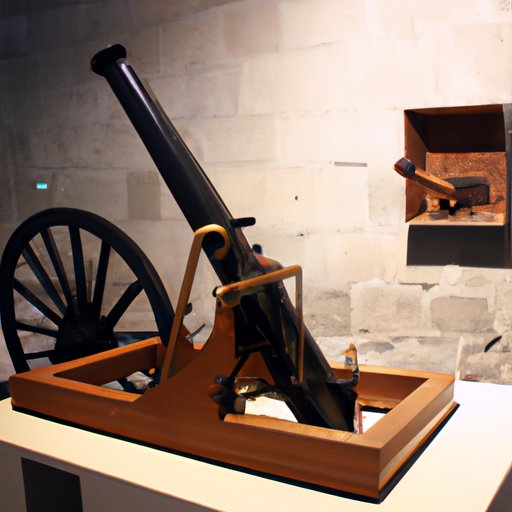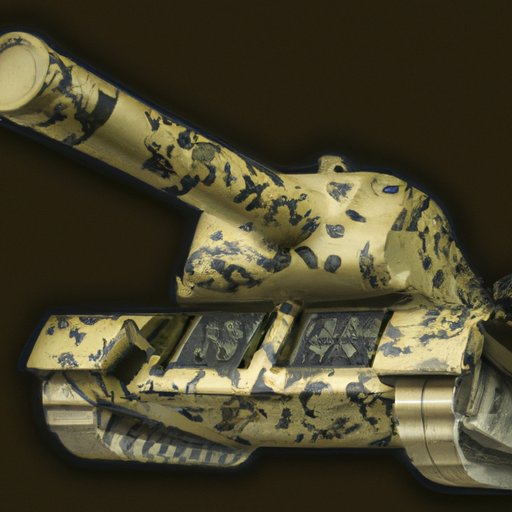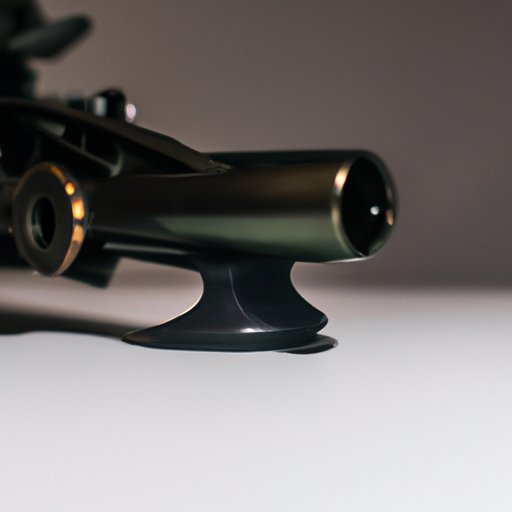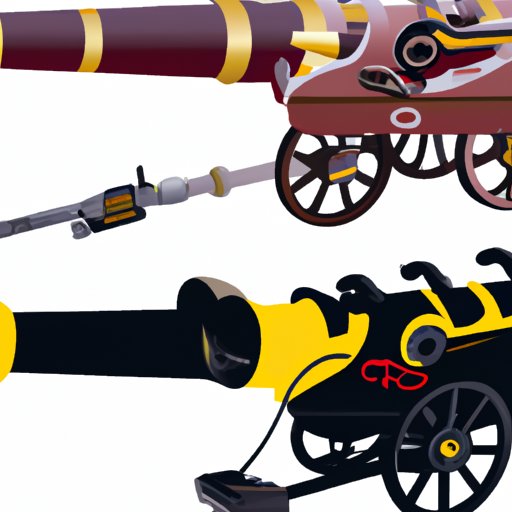Introduction
Guns have become an integral part of human history, with firearms playing a major role in both warfare and self-defense. But when were guns invented? This article will explore the history and evolution of gun technology, from early Chinese fire lances to modern automated weapons systems.

A History of Gun Invention: From Ancient Times to the Present
The invention of gunpowder is often credited to the Chinese, who developed it in the 9th century. However, the earliest form of gunpowder was likely used centuries earlier in China, where it was employed in explosives for fireworks and other festivities. The Chinese are also credited with inventing the first “gun” – a tube-like device known as a fire lance – which was used during the Song Dynasty (960–1279).
In Europe, gunpowder began to spread in the 13th century and by the 15th century, firearms had been developed. These early firearms were made of wrought iron or bronze and were used primarily for hunting and warfare. By the 16th century, rifling had been developed, which allowed bullets to spin as they left the barrel, making them more accurate and powerful.
Tracing the Evolution of Firearms from Early Chinese Fire Lances to Modern Guns
Since the invention of firearms, there have been numerous advances in gun design and technology. For example, in the 18th century, flintlock ignition systems were introduced, which allowed for faster reloading and firing. With the introduction of percussion caps in the 19th century, guns became even more reliable and easier to use. In the 20th century, guns began to be made of steel and other metals, further improving their accuracy and range.
Today, there are many different types of guns, ranging from handguns to shotguns to rifles. Each type of gun has its own unique features and uses, and some guns are designed specifically for certain tasks. For instance, handguns are typically used for self-defense, while rifles are often used for hunting and long-range shooting.

Exploring the Impact of Gun Technology on Warfare and Society
Guns have had a profound impact on warfare, allowing armies to fight at greater distances and with more precision than ever before. As a result, wars have become more destructive and casualties have increased dramatically. Guns have also enabled governments to exert greater control over their citizens, as they can now use lethal force to quell dissent.
At the same time, guns have had a positive impact on society. For example, guns have helped to deter crime and protect people from harm. They have also allowed people to hunt for food and defend themselves from predators. Additionally, guns have been used for sport and recreation, such as target shooting and skeet shooting.

Investigating How Gun Design Has Changed Over Time
Over the years, gun design has changed significantly. For instance, early guns were made of wood and metal, but today they are mostly made of plastics and synthetic materials, which are lighter and more durable. Additionally, guns have become increasingly accurate and powerful, thanks to advances in ammunition and optics.
Modern guns also have improved safety features, such as magazine safety locks and manual safeties. These features help to prevent accidental discharge and make guns safer to use. Finally, guns have become more ergonomic, with grips that are designed to fit comfortably in the hand and reduce fatigue.
Examining the Role of Rifles in Shaping Human History
Rifles have played a major role in human history, from colonial America to World War I and II. During the American Revolution, for example, rifles were used by both sides in the conflict, and their accuracy and power gave an edge to the Patriots. In WWI and WWII, rifles were even more important, as they allowed soldiers to fight at longer ranges and with greater precision than ever before.
Rifles have also been used for hunting, both for sport and for sustenance. In the U.S., rifles are still the most popular type of gun for hunting, with deer being the most common game animal. Rifles are also used for target shooting and competitive shooting, which has become increasingly popular in recent years.
Analyzing the Rise of Automated Weapons and Their Impact on Combat
Automated weapons systems, such as drones, have become increasingly prevalent in modern warfare. Automated weapons offer several advantages, including increased accuracy, reduced risk to personnel, and increased speed of response. However, they also raise ethical and moral questions, as they can potentially be used to carry out indiscriminate attacks.
Furthermore, automated weapons can lead to a “machine arms race”, as countries seek to acquire the latest and most advanced weapons systems. This could potentially destabilize the global balance of power, as countries vie for superiority in military technology.
Conclusion
From early Chinese fire lances to modern automated weapons systems, guns have evolved significantly over the centuries. Guns have had a major impact on warfare and society, and their development has shaped human history. From colonial America to WWI and WWII, rifles have played a key role in many conflicts, and automated weapons are now beginning to revolutionize combat. Ultimately, the history and evolution of gun technology is fascinating and complex, offering insight into how guns have shaped our world.
(Note: Is this article not meeting your expectations? Do you have knowledge or insights to share? Unlock new opportunities and expand your reach by joining our authors team. Click Registration to join us and share your expertise with our readers.)
